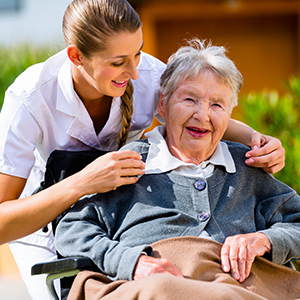The Centers for Disease Control and Prevention report that every year millions of accidental falls occur among adults 65 years of age and older. While many result in only minor discomfort, the others, depending on where they occur can result in serious injury, sometimes even death. These statistics are likely unsurprising: it’s easy to see the link between a weakened physical state common among seniors and an increased fall risk. The challenge lies in determining the steps that need to be taken to ensure your loved one is protected against falls.
When do they occur?
Falls are most often a result of the unexpected. While seniors may be unhappy about their diminishing strength, they are usually aware of their physical limitations. Significant risk comes about when their condition changes faster than their understanding of it. A good example is the recovery process after a significant operation.
Researchers from the University of Wisconsin Department of Medicine report that “there is a high incidence of falls after hospital discharge, particularly among patients who are functionally dependent.” This “functional dependence” can result from knee and hip replacements as well as other significant operations. If your loved one recently was discharged from a hospital may be at a higher risk of falls.
Where do they occur?
There are a few obvious locations: stairs, showers, and slopes quickly come to mind. The risks they pose are frequently remedied by non-slip surfaces and guardrails (certainly good things to consider). But falls can occur in many other places. Anywhere in a home where unfamiliar or infrequent motion is required bears a risk.
Think about heavy items stored in elevated areas; is the lifting of such items something your loved one does frequently? And consider the placement of appliance cords; do they require (or have the potential to require) your loved one to step over them frequently? As physical decline is progressive with age these actions become more and more difficult.
How do I prevent them?
There are a variety of prevention methods and products at your disposal but the best start is an assessment of your loved one’s specific risk factors and the best ways to mitigate them. If they are recovering from a recent operation, a continuous presence is the safest option. If they struggle with balance, utilizing non-slip surfaces while rearranging the placement of regularly used items lessens loss of balance occasions. And if they lack strength, placing railings on stairs and slopes provides a layer of support. How to find these resources is a simple Google search away.
The best defense against falls is an accurate understanding of where and when they occur. Knowing these helps determine the how. Take some time to look over your loved one’s day to day and see where they may need safeguards. Falls happen in an instant, but their effects can linger for a very long time. Make sure your loved one isn’t unnecessarily at risk.



